Amoebic dysentery: causative agent, symptoms, treatment
Intestinal infections are a large group of diseases that combine lesions of the gastrointestinal tract and characteristic clinical manifestations in the form of nausea, vomiting, diarrhea( with mucus and blood), or constipation. The causative agents of acute intestinal infections can be bacteria, viruses, helminths and protozoa. This greatly complicates the diagnosis and involves quite often syndromic treatment.
Definition of
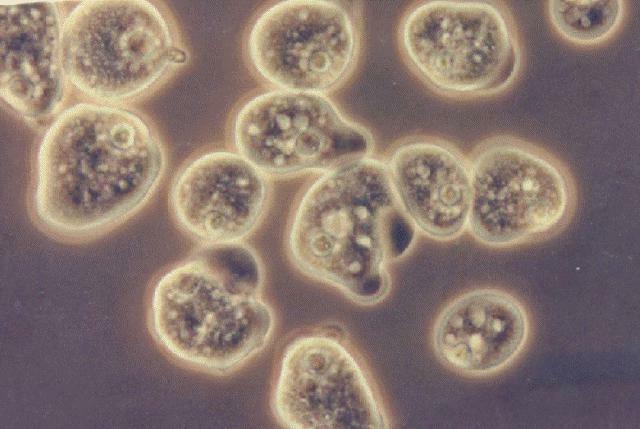
Amoebiasis( amoebic dysentery) is an anthroponous infection with a fecal-oral transmission mechanism. Its main manifestations are: chronic recurrent colitis and extraintestinal manifestations, such as liver abscesses, ulcers and others. Most often, the term amoebiasis means amoebic dysentery, which is caused by the Entamoeba histolytica parasite.
Amoebic encephalitis and keratitis are among other amoebiasis. According to the World Health Organization, about ten percent of the world's inhabitants are infected with this infection, and it is one of the leading causes of death from parasitic diseases. Extraintestinal manifestations are very difficult to diagnose, therefore it is not always possible to diagnose and treat amoebiasis in time.
Epidemiology
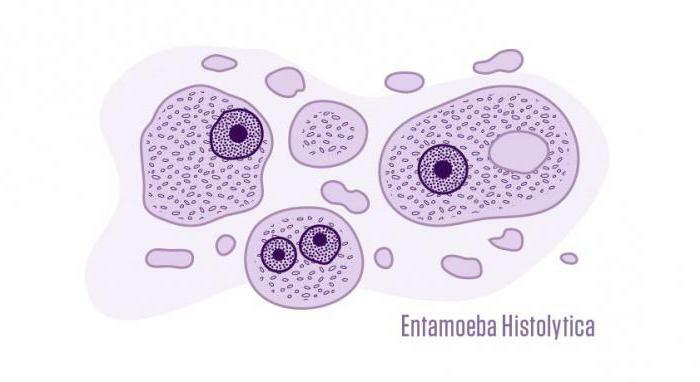
Amoebic dysentery is common in all countries with a hot and humid climate. Symptoms of this disease can often be found in people who neglect sanitary and hygienic standards. Endemic to the pathogen are Central and South America, especially Mexico, and India.
Sometimes large outbreaks of this intestinal infection are registered in relatively well-off countries, for example, in 1933 during the World Exhibition, which was held in Chicago. Currently, massive and sporadic cases of the disease appear in places of congestion of emigrants from endemic regions. Most often, the infection manifests itself in the warm season.
The source of infection is a sick person or a carrier of protozoa. Infection occurs only through dirty hands, food and water. Also, the disease can be transmitted with unprotected homosexual contacts. It is known that the cyst form of amoebae can spread on the paws and wings of insects.
Pathogen
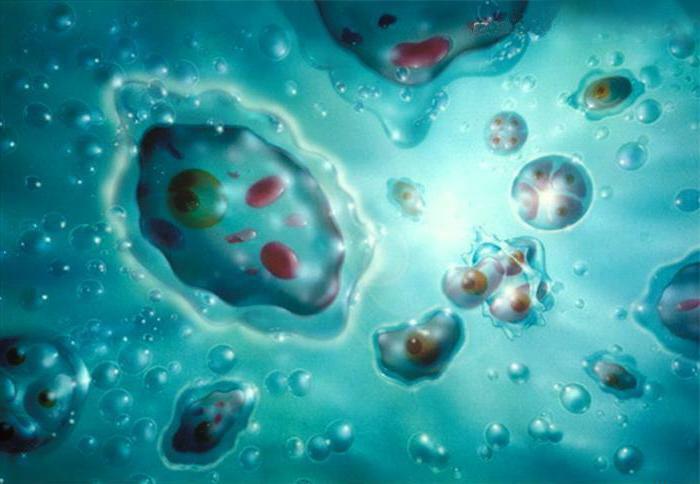
Why does amoebic dysentery occur? Its causative agent belongs to the simplest, which can exist in three different forms:
- tissue( found only in sick people);
- luminescent;
- cystic.
The last two are found in carriers of the disease. It is a cell up to 40 micrometers in size, which has a nucleus and many vacuoles. To move in the human body uses false leg. To feed them they are suitable bacteria, mushrooms, food particles. Dysentery amoebae is caused precisely by this form.
A cyst is a round or oval cell measuring 30 micrometers. It can have several cores( two to four), it depends on the stage of development.
The life cycle of the amoeba
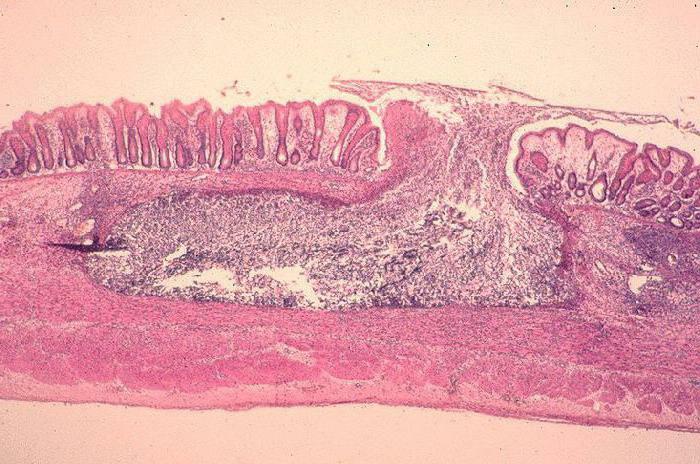
The cyst enters the small intestine of a person through dirty hands, water or greens. There, the cyst shell is destroyed, and a mature maternal amoeba emerges into the lumen of the organ. This form starts to share. As a result of this process, eight new single-nuclear pathogens are formed. Dysentery amoeba begins at this very moment. With a combination of favorable conditions of the body and a sufficient number of mononuclear vegetative forms, amoeba continue to multiply and move further into the intestine.
In the process of its life, the protozoa produce substances that poison a person and cause the characteristic symptoms of an intestinal infection. With feces, the vegetative and cystic forms fall into the external environment. There they can persist for quite a long time. In addition, they are resistant to disinfectants.
The pathogenesis of

How does a disease such as amoebic dysentery develop? Infection begins with eating unwashed food. So amoebae fall into the blind and ascending colon, where they can not manifest themselves for a long time. But in unfavorable conditions for a person( dehydration, poor diet, dysbacteriosis), cysts discard their shell, and a luminescent amoeba appears.
Using its own cytolytic and proteolytic enzymes, the pathogen penetrates into the tissue, causing inflammation and the formation of ulcers and necrosis of small areas. In some cases, amoeba enter the blood vessels and flow into the other organs with fluid flow, forming abscesses there.
In the intestinal form of the disease, the inflammation spreads downward, from the cecum to the straight line. The mucous organ is edematous, against a background of hyperemia, small nodules and ulcers that contain necrotic detritus and vegetative forms of amoeba are seen. Over time, the nodules are destroyed, leaving in their place new ulcers up to two and a half centimeters in diameter. Deep defects on the bottom are covered with pus. If you examine the biopsy specimen from the ulcer wall, you can detect amoeba.
Chronic disease is accompanied by the formation of cysts, polyps and amoeba. These are tumorous formations, which consist of granulation tissue, eosinophils and fibroblasts.
Extraintestinal form of
Dysentery of amoebae has both dyspeptic manifestations and general osmosis. When vegetative forms of amoeba penetrate into the thickness of the intestinal wall, they can enter the systemic circulation. This leads to the spread of the pathogen throughout the body. According to the portal vein system, amoebae enter the liver parenchyma.
The body can develop lesions of varying severity: from protein or fatty degeneration to severe hepatitis and liver abscess, which is located under the dome of the diaphragm. Sometimes it is also called a chocolate cyst due to the specific color of pus. If the inflammation is not treated, then a spontaneous dissection of the abscess into the abdominal cavity occurs with the development of peritonitis. Or the cyst can break through the diaphragm into the lungs, mediastinum or pericardium, causing corresponding complications. In addition to the liver, the causative agent is able to affect the brain, skin and other organs.
Clinic
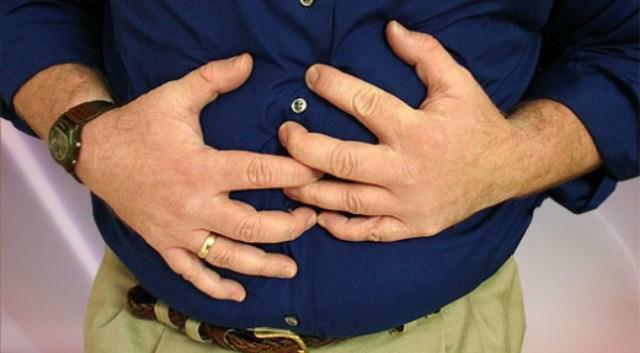
The incubation period lasts about a week, after which amoebic dysentery is manifested. Symptoms begin with general weakness, pain in the iliac regions and a rise in body temperature. In ten percent of cases, the disease takes lightning fast. It is characterized by profuse diarrhea, with blood and mucus, which causes severe dehydration and death. Somewhere in a third of patients, fever is observed in combination with an increase in the liver. Inflammation at the beginning of the disease is poorly expressed, therefore in the general analysis of blood there are no characteristic changes.
Other manifestations are accompanied by extraintestinal dysentery. Symptom, which could be called pathognomonic, in this case is absent. Amoebiasis practically does not manifest itself in the body until the moment when the critical mass of the pathogen accumulates.
If you do not take any action regarding the treatment of the disease, then after a while the infection becomes chronic. Gradually anemia and general exhaustion develops. The lower the resistance of the body, the faster the intestinal form passes into the extra-intestinal. The risk category includes small children, the elderly, pregnant women and patients taking immunosuppressants.
Diagnosis
What are the criteria for diagnosing dysentery? Diagnosis and treatment of this infection are closely related to the life cycle of the protozoa. In order to find out the etiology of diarrhea, the doctor takes an analysis of stool, in which he finds the tissue forms of amoebae. If cysts or luminal forms are found in the excrements, this indicates carriage and can not serve as a confirmation of the diagnosis.
As in the human body as a conditionally pathogenic flora are already several types of amoebas, the diagnosis can be somewhat difficult. It is also erroneous to diagnose an Entamoeba dispar. This is a non-pathogenic amoeba, which is completely harmless to humans, but morphologically very similar to dysentery.
To verify the diagnosis, a polymerase chain reaction and serological tests are also used. To detect extraintestinal forms of amoebiasis, it is necessary to conduct X-ray examination, ultrasound and computed tomography. Differentiate the amoebic infection with shigellosis, salmonellosis and ulcerative colitis.
Treatment of
Treatment of amoebic dysentery begins with cytostatics, for example metronidazole or tinidazole. If the patient does not have any symptoms, iodine quinine or paromomycin can be used to eliminate parasites.
The first drug against amoebiasis was emetine, which was mined in South America from Ipecacuanas. Now it is rarely used, as it is extremely toxic and not effective enough. This drug is only used in case of prolonged flow, with resistant forms and allergies to metronidazole.
For therapy of extraintestinal forms use metronidazole in combination with yatren, doidochin, mexaform and other drugs. In some cases, resort to surgery.
Complications of

Amoebic dysentery in humans can be complicated by perforation of the intestinal wall. This occurs when a too deep defect is formed. When perforated, intestinal contents enter the abdominal cavity and infect it. The following complication develops - peritonitis. In order to save the patient's life, it is necessary to resort to surgical help: to make a mid-laparotomy and to conduct a revision of the abdominal organs.
Another formidable complication is intestinal bleeding. It also develops during the formation of ulcers. For its relief, one can take both conservative and operational methods. Healing ulcers can, because of the formation of scar tissue, narrow the lumen of the intestine, thus disrupting the passage of food.
Prevention
Dysentery amoebae is an intestinal infection, therefore, in order to prevent it, it is necessary to disinfect the sources of the pathogen in a timely manner: dubious water bodies, central water supply tanks and others.
In addition, it is necessary to carry out activities to identify carriers and sporoprodeliteley, as well as treat patients with acute forms with anti-epidemic measures. Recovering people and carriers in no case should be allowed to work in public places.
Another way to reduce the number of infected people is to promote personal hygiene and proper food handling before eating. After the infection, a person should be observed regularly throughout the year in the infectious disease room. And only after the analyzes within three months are negative for amoebiasis, the patient will be considered permanently healthy.
